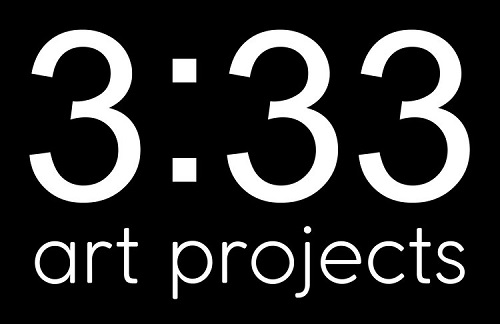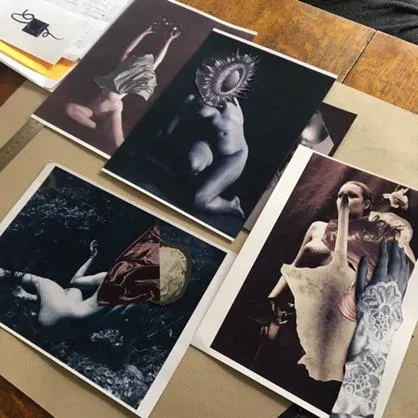Heidi Yardley explores elusive worlds of displaced identity through representations of the female figure, often in surreal configurations. Yardley pairs her protagonists with ‘broken’ still lives (fragmented florals and displaced objects) through which the viewer can begin to decipher a language of fractured memory and unresolved relationships. Yardley’s practice spans 20 years.
She has been a finalist in significant prizes including The Archibald Prize, Wynne Prize, Sulman Prize and The Doug Moran National Portrait Prize. Her work is held in a number of public institutions including Artbank, Gippsland Art Gallery, and the University of Queensland Art Museum. 3:33 Art Projects curated an exhibition for the artist in 2019 as part of the Clayton Utz Art Partnership in Melbourne, courtesy of Nicholas Thompson Gallery.

Heidi Yardley and her cat Nico in Harcourt where she has a temporary work space. Photograph: Guss Mallmann
What was unique about the Art Partnership?
It’s a fantastic initiative that allows artists to showcase their work in corporate environments. Working with the team at 3:33 was an absolute pleasure due to their incredibly positive energy and genuine enthusiasm for art. They are committed to connecting people and introducing businesses and clients to new experiences of engaging with art.
How has your practice evolved since this body of work was on view?
I held a solo show at Nicholas Thompson Gallery in May last year and since then have been developing new work. I’m spending more time in pre-production, working with found images and developing source material on computer. I’m also embarking on my PhD which has meant I’ve spent more time reading and researching.

Heidi Yardley’s collage process in the studio
We note you’ve been using collage again, what attracts you to the imagery, process and outcomes here?
The collages are source material for my charcoal drawings. Simplifying to a monochromatic palette allows me to focus purely on the image in terms of tonal variations. The collage process is intuitive and allows for elements of surprise. I’m more inclined to work with the unexpected and surreal aspects of images through the process of collaging source material.

new charcoal drawing in the studio
How did you stay creative during lockdown and has it altered your practice in any way – for example a shift or amplification of the fictive elements, dreamlike states, sexuality or nods to domesticity in your work?
Interestingly I had very intense and complex dreams (as apparently many people did) and I was thinking a lot about the unconscious and how rich and dense that mysterious space is. I spent some time working in regional Victoria in a different environment so I had to set up a makeshift studio to do some new work. I really abandoned the paintings I had commenced at my usual studio, so in that sense it was a bit interruptive to my normal process. Thankfully, I now have a lot of exciting ideas and just need the time to make them happen!
What is the role of art in these times?
I’ve never lost faith in the importance of art. To me it seems more important than ever to be creative, to invent worlds outside of the mainstream version of reality. The media tells a particular story, often biased and it’s dangerous to be caught up in all of the pain. Art is transformative and soul enriching.
What’s coming up for you next?
Many group shows have been cancelled due to the pandemic but if all goes to plan, I’ll be exhibiting at Sydney Contemporary Art Fair later next year with Nicholas Thompson Gallery.
Heidi Yardley is represented by Nicholas Thompson Gallery, Melbourne, Arthouse Gallery, Sydney and Jan Murphy Gallery, Brisbane.
This article is presented in collaboration with 3:33 Art Projects



